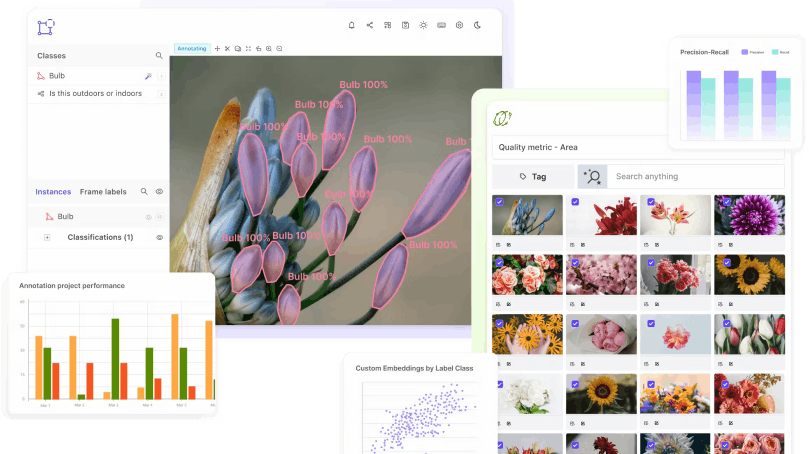Transfer Learning
Encord Computer Vision Glossary
Transfer learning refers to a technique in machine learning where knowledge gained from solving one problem is applied to a different but related problem. In transfer learning, a pre-trained model is used as a starting point to learn a new task or improve an existing model's performance.
The pre-trained model is usually trained on a large dataset to recognize patterns in data. This model can then be fine-tuned on a smaller, related dataset to perform a specific task. By reusing the knowledge acquired in the pre-training phase, transfer learning can reduce the amount of data required to train a model and improve its performance.
Transfer learning is particularly useful in domains where large amounts of labeled data are scarce, such as in medical imaging or natural language processing. It has been successfully applied in many applications, such as image classification, text classification, and speech recognition.

Benefits of Transfer Learning
Improved Performance
Transfer learning allows leveraging knowledge from pre-trained models that have been trained on large and diverse datasets. By utilizing the learned representations and features, transfer learning can significantly improve the performance of models on the target task. It enables the model to start from a better initialization point and capture relevant patterns or concepts, leading to enhanced accuracy and generalization.
Reduced Training Time and Resource Requirements
Training deep learning models from scratch often requires substantial computational resources and time-consuming processes. Transfer learning helps mitigate these challenges by utilizing pre-trained models, saving time and computational resources. By starting with a pre-trained model, the training process can converge faster, requiring fewer iterations and labeled data.
Effective Learning with Limited Data
Annotated or labeled data is often scarce or expensive to obtain. Transfer learning addresses this issue by allowing models to learn from large-scale datasets in a different but related task or domain. The knowledge gained from the source task can be transferred to the target task, improving the model's performance even when there is limited labeled data available for the target task.


Knowledge Transfer
Transfer learning facilitates the transfer of knowledge learned from one domain to another. It enables models to benefit from the representations and features extracted by pre-trained models on vast amounts of data. This knowledge transfer can help capture underlying patterns, structures, or concepts that are common across tasks or domains, leading to better generalization and improved performance.
Adaptability to New Tasks
Transfer learning enables models to adapt and perform well on new or unseen tasks. Instead of starting from scratch for each new task, transfer learning provides a foundation that can be built upon, allowing models to quickly adapt to new problem domains or variations of existing tasks.